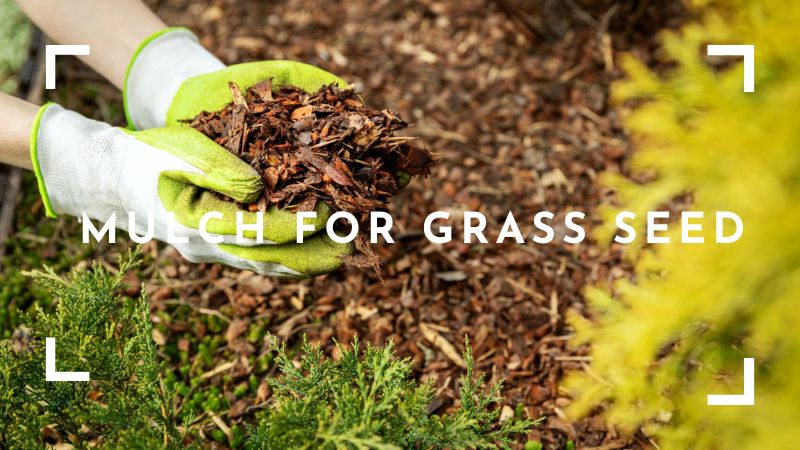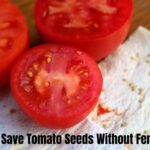Sowing new grass seeds in an area can be a challenge, especially when you want to ensure that the seeds germinate evenly and grow healthily. One of the important factors in this process is proper mulching. Mulch for grass seed not only helps protect grass seeds from environmental factors such as harsh sunlight and strong winds but also retains the moisture needed for the seeds to germinate and grow. In this article, Garden Creatives will show you how to mulch for grass seed effectively, from choosing the right materials to applying techniques that will help you achieve a smooth, green, and healthy lawn.
How to mulch for grass seed?
Are you wondering how to mulch grass seed? We’ll explore everything about mulch and how to use it effectively in your garden. Mulch not only helps protect grass seeds but also provides many other benefits such as retaining moisture, controlling weeds, and improving soil structure.
If you’re dreaming of beautiful, neatly manicured, and perfectly mulched garden beds, then this is the article for you. We’ll show you step-by-step how to mulch grass seed, as well as the reasons why you should do this. Mulch can be a useful tool to make your garden greener and tidier.
When it comes time to determine the best mulch options for your lawn and landscape, it is best to work with a landscape professional who has specialized knowledge and experience with all types of mulches. They can help you choose the type of mulch best suited to your garden’s specific needs and conditions, ensuring that you get the best results.
Why use mulch?
Using plant mulch in the garden not only brings aesthetics but also plays an important role in protecting and nurturing plants. Organic and inorganic mulches each have their own benefits, meeting different garden needs.
Organic mulch
Organic mulch, such as sawdust, straw or dried leaves, provides a natural layer of protection for the plant bed. As they decompose, they not only create a barrier that helps maintain moisture and prevent weeds but also provide essential nutrients to plants and soil. However, organic mulch needs to be replaced periodically due to decomposition.
Inorganic coating
Inorganic mulches, such as gravel, rocks or resin, are often used to add decorative elements and create garden paths. They do not decompose, so do not need to be replaced regularly, and are very effective in keeping the soil stable.
The benefits of mulch for grass seed
Using mulch has many different benefits:
Protects soil from erosion: Mulch helps retain soil, preventing loss by wind and water.
Retains moisture in the soil: The mulch layer minimizes water evaporation, helping to maintain the moisture needed for plants.
Prevent weed growth: A thick layer of mulch will reduce weed growth, saving time and effort on weeding.
Adds visual appeal: Mulch creates a clean and tidy surface, making the garden more attractive.
Maintain soil temperature: Mulch keeps soil temperature stable, protecting plant roots from temperatures that are too high or too low.
Cushions underfoot: Mulch helps create soft, comfortable paths when moving through the garden.
Specific benefits
The specific benefits of mulch depend on:
Type of coating you use: Each type of coating has its own properties and benefits.
Time of year: When the coating is applied can affect its effectiveness.
Soil quality and plant type: Each soil type and plant has its own needs, and mulch needs to be chosen accordingly.
The purpose of using the mulch layer is also very important. You can use mulch to improve garden beds, prevent erosion, or retain water in problem areas. Understanding your goals will help you choose the type of mulch and how best to apply it to your garden.
How to mulch for grass seed
When sowing seed into an existing lawn, you usually do not need to mulch because the existing grass will shield the seed. However, if you are planting new seeds in an area that does not already have grass, mulching is necessary to protect the seeds from drying out or being blown away by the wind before they can germinate. So how to effectively cover grass seeds with mulch?
To protect grass seeds, you should choose the right mulch material and spread a thin layer of mulch. This layer of mulch needs to keep the seeds moist while allowing the seedlings to receive enough sunlight to grow. Some popular options include:
Clean straw: A thin layer of straw about 1/4 inch can help retain moisture and protect seeds.
Sawdust: Provides a good layer of protection and is easy to use.
Lightweight peat moss: Helps retain moisture without weighing down the mulch.
Paper mulch: Good for retaining moisture and can decompose naturally.
If you sow seeds on a sloping or hilly lawn, you may consider using:
Biodegradable Seed Mat: Helps keep seeds in place and protect them from the elements.
Burlap layer: Provides good protection for seeds in tilted or strong wind conditions.
Epilogue
Mulch for grass seed is an important step in the process of sowing new grass seeds, helping to protect and support the growth of seedlings. By choosing the right materials and applying mulch for grass seed carefully, you can create optimal conditions for seeds to germinate and grow vigorously. Remember that lawn care goes beyond mulching; Patience and constant care also play important roles in maintaining a green and healthy lawn. If you need more help, don’t hesitate to seek advice from lawn care experts to achieve the best results for your garden.





